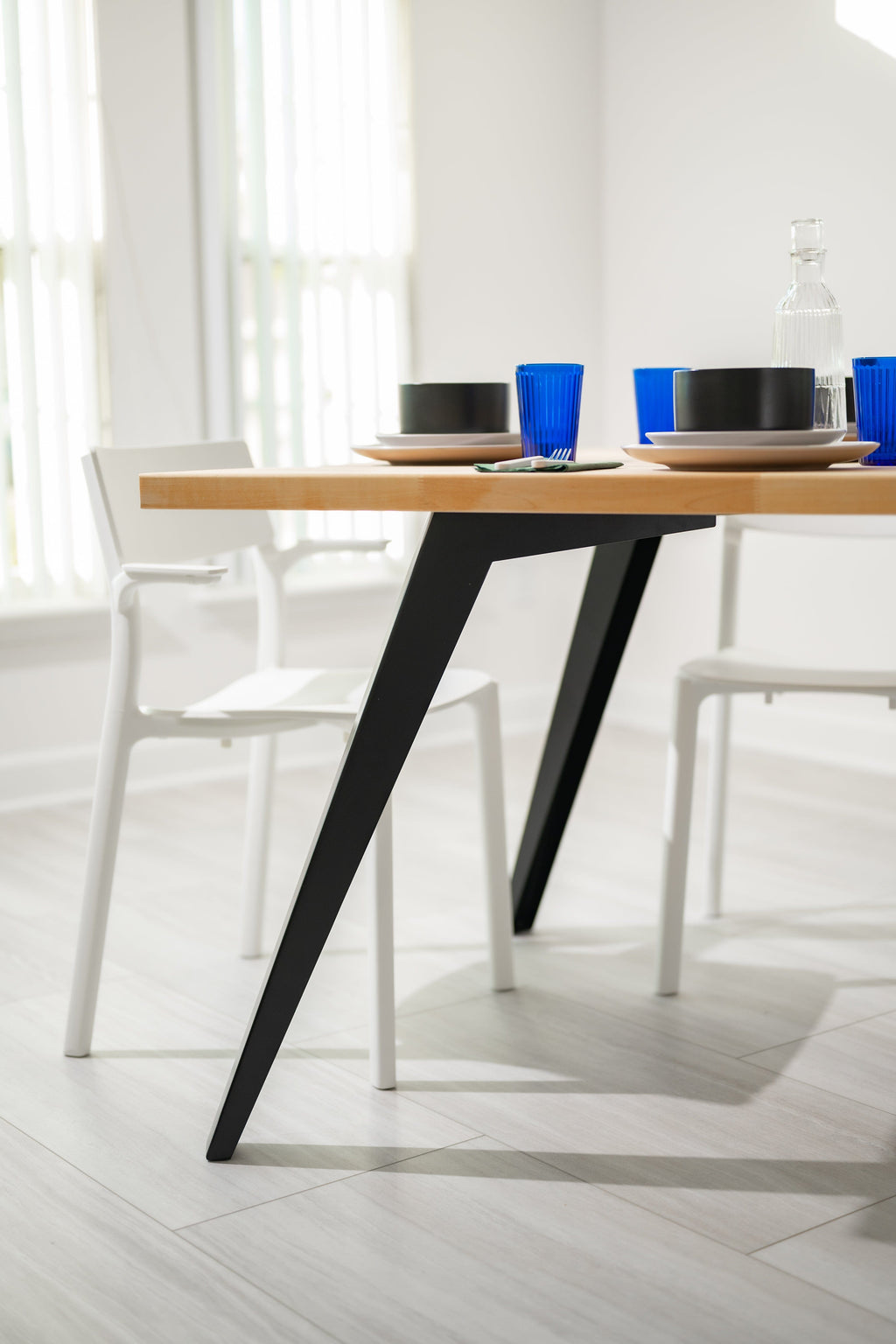Why Custom Dining Room Table Legs Are Worth the Investment
Wiki Article
From Traditional to Modern: Locate the Suitable Dining-room Table Legs for Your Design
While timeless designs such as cabriole and transformed legs stimulate a sense of classic refinement, modern styles like barrette and geometric choices offer an opportunity for striking aesthetic interest. As you consider these elements, the concern stays: just how can you perfectly incorporate these diverse leg designs to create a harmonious eating experience?Comprehending Table Leg Styles
The range of eating space table leg designs can significantly influence both the looks and functionality of the area. Each leg design contributes special functional attributes and visual aspects, dealing with varied style preferences and usage demands. Comprehending these styles is critical for picking the appropriate eating table that lines up with your general interior decoration vision.For example, conical legs supply a clean, traditional look that can improve a room's beauty, while pedestal bases offer stability and make the most of legroom, making them ideal for smaller sized rooms. Hairpin legs, a hallmark of mid-century modern style, introduce an industrial flair, permitting an airy, open feel. Trestle legs stimulate rustic beauty, providing robust assistance and a sense of eternity.
Wooden legs can bring warmth and structure, whereas steel alternatives usually convey a smooth, modern ambiance. Inevitably, comprehending table leg designs is essential for developing a natural eating area that reflects individual design while making sure usefulness and convenience.
Traditional Table Leg Options
When selecting dining area table legs, typical alternatives often personify timeless elegance and workmanship. These designs show a rich heritage and a commitment to high quality, making them optimal for those that value traditional aesthetic appeals.One of the most legendary conventional leg styles is the cabriole leg, characterized by its elegant curved shape. This layout typically includes attractive carvings and is most frequently found in Queen Anne and Chippendale furnishings. An additional preferred choice is the transformed leg, which boasts a collection of smooth, rounded forms that offer a classic appearance while maintaining stability.
Additionally, the straight leg, while simple, offers a durable and basic structure that can blend flawlessly with a selection of tabletop styles. For those drawn to ornate outlining, claw-and-ball feet legs stimulate a sense of grandeur and can function as a sensational focal point in any type of eating space.
Last but not least, stand bases, although not purely legs, give an alternate traditional option that allows for adequate legroom and can be wonderfully sculpted. Each of these typical leg styles adds to the total ambiance of a dining-room, weding feature with aesthetic charm.

Modern Table Leg Layouts
Modern table leg designs provide Read Full Article a diverse series of styles that emphasize cutting-edge products and clean lines. These designs typically prioritize capability while working as striking centerpieces within an eating space. Minimalist aesthetics are common, with legs crafted from products such as metal, glass, and crafted timber, which add to a modern and ventilated feeling.One prominent layout is the barrette leg, defined by its slender, conical structure that offers stability without overwhelming the table top (dining room table legs). This design is typically located in mid-century contemporary furniture and can effortlessly complement different table forms. Another pattern is using geometric forms, where legs might handle asymmetrical or angular types, including aesthetic interest and a touch of creativity

Mixing Styles for Unique Areas
Commonly, house owners seek to produce special eating areas that click to find out more reflect their individual style by blending numerous design elements. This technique permits the incorporation of varied looks, causing a harmonious yet unique atmosphere. Combining a rustic wood table with smooth, modern-day metal legs can develop an appealing comparison that raises the area's total charm.Furthermore, incorporating vintage table legs with modern table tops can evoke a sense of background while maintaining a modern-day sensibility. Such combinations not just showcase specific taste however also motivate creativity, enabling home owners to curate a space that really feels both individual and inviting.
Shade plays a crucial function in this mixing process; picking table legs that match or comparison with the existing color pattern can improve aesthetic interest. For instance, whitewashed legs can soften the boldness of a dark table surface area, producing a well balanced visual.
Tips for Selecting the Right Legs
Picking the right table legs is vital for accomplishing both performance and aesthetic appeal in your dining room. Begin by taking into consideration the total style of your space. Traditional setups take advantage of legs that feature detailed makings or transformed styles, while modern areas might call for streamlined, minimalist designs.Following, examine the elevation and security of the legs. dining room table legs. Common table range between 28 to 30 inches in elevation, so make sure the legs enhance this measurement for convenience. Furthermore, robust materials, such as hardwood or steel, can boost stability and long life
Assess the leg form as well-- choices consist of right, tapered, or stand layouts. Straight legs supply a classic appearance, while tapered legs can add a touch of beauty. Pedestal bases supply sufficient legroom and are ideal for smaller sized areas.
Final Thought
In summary, picking the suitable eating space table legs calls for mindful factor to consider of both standard and modern-day styles. By harmonizing leg style, height, and product with the overall décor, a natural and inviting atmosphere can be attained.The variety of eating space table leg designs can substantially influence both the visual appeals and capability of the area. Ultimately, comprehending table leg styles is crucial for producing a natural dining location that reflects individual style while making sure practicality and convenience.One of the most iconic standard leg styles is the cabriole leg, identified by its graceful rounded shape. Straight legs provide a timeless look, while conical legs can add a touch of style.In summary, choosing the ideal eating room table legs calls for mindful factor to consider of both modern-day and standard designs.
Report this wiki page